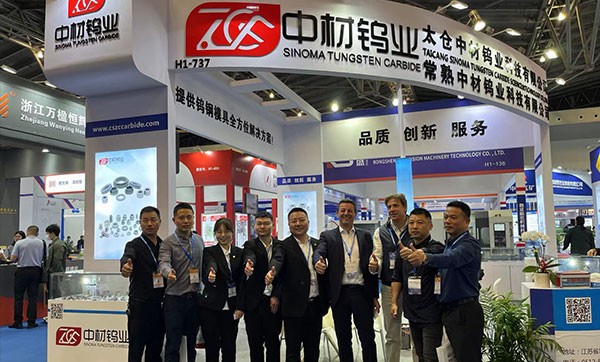In the realm of modern engineering and manufacturing, few materials hold as much promise and versatility as tungsten carbide. Renowned for its exceptional hardness, strength, and resistance to wear and corrosion, tungsten carbide has found its way into a multitude of applications across various industries, from aerospace to healthcare. Let's delve into the fascinating world of this remarkable material and explore its diverse uses.
What is Tungsten Carbide?
Tungsten carbide is a composite material formed by combining tungsten (W) and carbon (C) atoms in equal parts. The result is a ceramic-like substance that is extremely hard and dense, ranking just below diamond in terms of hardness on the Mohs scale. This unique combination of properties makes tungsten carbide an invaluable material for applications where strength and durability are paramount.
Cutting Tools and Machining
One of the most well-known applications of tungsten carbide is in cutting tools and machining. The hardness of tungsten carbide allows it to withstand high temperatures and maintain sharp edges, making it ideal for cutting, drilling, and milling operations. Carbide inserts, often used in machining processes, prolong tool life and enable efficient material removal in industries such as automotive, aerospace, and manufacturing.
Mining and Drilling
In the mining and drilling industries, where tools are subjected to extreme wear and abrasion, tungsten carbide plays a crucial role. Drill bits, inserts, and other wear-resistant components made from tungsten carbide are used to extract minerals, oil, and gas from the earth. These tools can withstand the demanding conditions of deep drilling and excavation, offering reliability and longevity in harsh environments.
Wear Parts and Wear Resistance
Tungsten carbide's exceptional hardness and wear resistance make it an ideal choice for wear parts in machinery and equipment. Components such as nozzles, seals, and valve seats benefit from the durability of tungsten carbide, reducing downtime and maintenance costs. In industries ranging from pumps and valves to textile manufacturing, these wear-resistant parts enhance efficiency and reliability.
Aerospace and Defense
The aerospace and defense industries demand materials that can withstand high temperatures, extreme forces, and harsh environments. Tungsten carbide is used in aircraft components, such as turbine blades and nozzles, where its heat resistance and strength are critical. In military applications, tungsten carbide finds use in armor-piercing ammunition and armor plating, providing protection and lethality.
Medical and Dental Tools
Even in the realm of healthcare, tungsten carbide has made significant contributions. Dental drills and surgical instruments benefit from the hardness and precision of tungsten carbide, enabling intricate procedures with minimal wear. Its biocompatibility and resistance to corrosion make it a safe and reliable choice for medical tools that require sterilization and long-term use.
Environmental and Energy Applications
Tungsten carbide's properties extend to environmental and energy-related applications as well. It is used in renewable energy technologies such as wind turbines, where its strength and wear resistance contribute to efficient power generation. Additionally, tungsten carbide is utilized in the production of catalysts for chemical processes, aiding in pollution control and industrial efficiency.
In conclusion, the application of tungsten carbide spans a vast array of industries, each benefiting from its unique combination of hardness, strength, and wear resistance. From enhancing the efficiency of machining operations to enabling the exploration of natural resources, this remarkable material continues to push the boundaries of what is possible in engineering and manufacturing.
As technology advances and industries evolve, the demand for materials like tungsten carbide will only continue to grow. Its versatility and reliability have cemented its status as a cornerstone of modern engineering, promising innovation and progress for years to come. Whether in the depths of a mine or the precision of a surgical suite, tungsten carbide stands as a testament to the ingenuity of human achievement.




